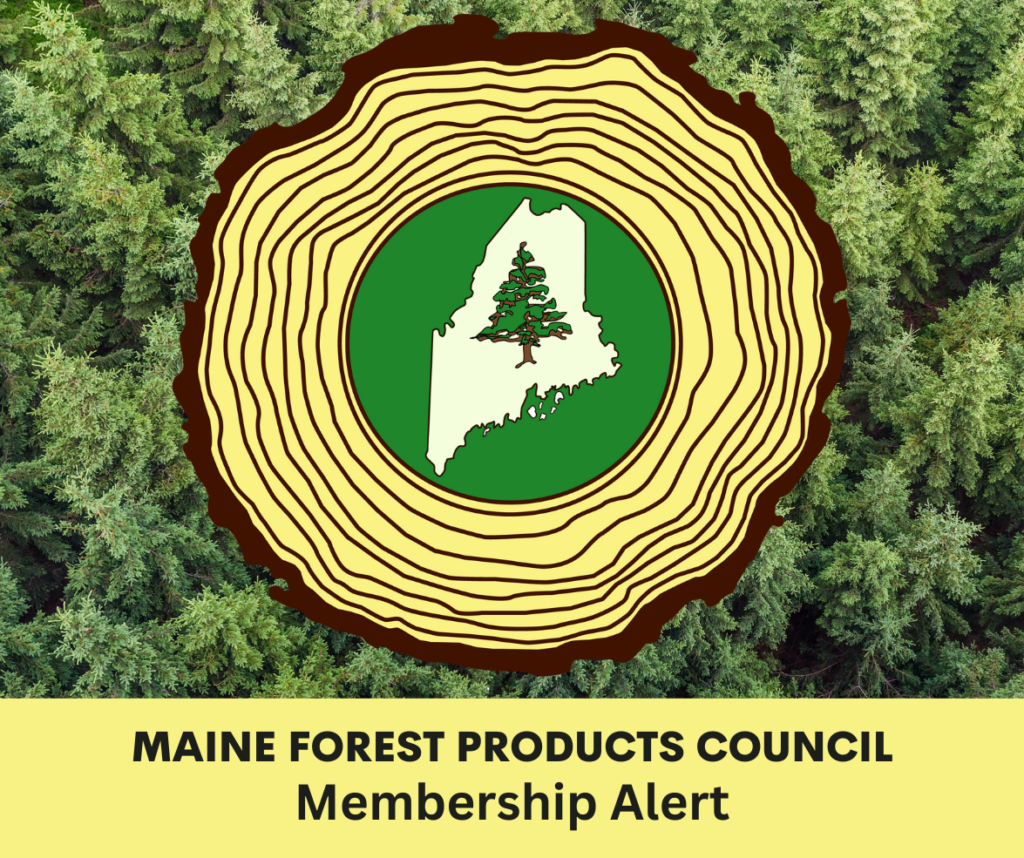Draft would tag an estimated 14.5 million acres, or 79% of Maine’s undeveloped land, in arbitrary new “undeveloped habitat block” category under Site Law, requiring mitigation for all renewable energy development, impacting land values for thousands of landowners in every corner of the state.
Public hearing scheduled for March 7 in Augusta
Public comment period through March 18
MFPC members urged to engage!
Last year, the Legislature passed LD 1881 in response to the development of large-scale solar projects on agricultural lands. This new law directed the Department of Environment Protection to develop a mitigation compensation fee structure for solar and wind energy development under the Site Location of Development Act (Site Law). The mitigation fund would allow developers the option to either conduct a habitat mitigation project or pay a fee to the fund that would then be used to conserved land located in the same ecoregion as the development. This process, established by Chapter 448, would be required for solar, wind or high-impact transmission line projects that trigger Site Location of Development Laws.
While the Council initially monitored this legislation, it was apparent throughout the committee process that the intent was to mitigate impacts to high-value farm soils and to encourage developers to prioritize the siting of solar projects on non-agricultural lands that “do not contain rare plant populations, provide habitat for rare or exemplary natural communities or diminish the ability for our natural and working lands – including currently forested lands – to effectively sequester carbon.” (Nancy McBrady, DACF testimony)
The DEP has now proposed to amend Chapter 375, No Adverse Environmental Effect Standards of the Site Location of Development Act, to define “wildlife and fisheries habitats” and “large undeveloped habitat blocks”, and to establish the compensation fee program.
Unfortunately, the Council has some serious concerns with the rules as proposed, as they appear to go far beyond the directive of the legislature by establishing new broad protection measures in Site Law that include “large undeveloped habitat blocks” that arbitrarily presume that any development within these blocks (79% of Maine’s undeveloped land), simply based on acreage, would harm critical wildlife habitat without site-specific studies to confirm impacts within an undeveloped block.
The map released by the DEP is only advisory in nature and would need to be verified during the application process. It includes blocks presumed to be 150 acres or larger in the Southern ecoregion (40% of the region), and blocks presumed to be 250 acres or larger in the Central Interior and Midcoast ecoregion (33% of the region). The rest of the state does not have a size limit, and remains unmapped, but preliminary estimates are substantial, especially in the unorganized territories.
Any level of impact to these undeveloped blocks, which again, are defined in a way so broad as to impact upwards of 14.5 million acres, would require compensation, regardless of efforts to conserve critical habitat and site these projects to minimize or avoid impacts.
The rules also establish a rigid compensation formula for all impacts when the DEP’s directive in LD 1881 was to “establish variable compensation amounts based on the value of the habitats…and the degree of adverse effect caused by the development.” It also requires additional mitigation for impacts to deer wintering areas, habitats of rare, threatened or endangered species, migratory bird pathways (new to Site Law) and important wildlife corridors (also new to Site Law).
We are also concerned that a punitive, broad regulatory framework for unproven impacts to blocks of a certain size, that would now be mapped, could then apply to other projects in these blocks.
The DEP’s proposal that acreage alone should determine the value of a habitat block is not biologically justified. As with the agricultural soil component of this new law, impacts on wildlife should be determined on a case-by-case basis with many other variables considered. Mitigation without a case-specific study of impacts is unreasonable.
While the intent of the law was to incentivize the development of renewable energy in certain locations, the proposed rule that has been posted is deeply flawed and would require permanent mitigation for temporary impacts. It may also remove incentives to site projects in a way to minimize impacts since all impacts trigger mitigation regardless of planning.
It is customary for consequential new rules to involve a rigorous stakeholder process (examples include the public Paid Family Medical Leave stakeholder process that is currently underway and the EPR stakeholder process that the DEP carried out over many before issuing a draft rule).
Even though this rule would result in a huge taking of the land development values and opportunities for landowners of all sizes, not a single landowner or landowner group was consulted in the drafting of this rule.
If MFPC had been consulted, we would have advised the Department that arbitrarily mapping upwards of 79% of Maine’s undeveloped land as a new protected resource is not scientifically sound and it goes far beyond the directives of Chapter Law 448. Simply being dirt that holds the land together is not a unique habitat worthy of rigid regulation. Mitigation and compensation must be site-specific and based on in-depth studies to confirm rare or important habitat features.
While the proposal is limited to renewable energy development at this time, as we have seen time and time again, once established, these criteria could very easily be expanded to projects of all types, and potentially even to forestry, the construction of logging infrastructure such as roads, etc.
The Maine Forest Products Council recommends that this rule be returned to the Department for substantial revisions as part of a stakeholder process.
As posted, it is not workable or acceptable to the landowner community or forest industry. We believe a more equitable framework can be established to address wildlife mitigation concerns for large renewable energy projects.
A public hearing has been set for March 7 with the comment period ending on March 18.
For more information, including the map, visit https://www.maine.gov/tools/whatsnew/index.php?topic=dep-rulemaking&id=12333187&v=govdel.


